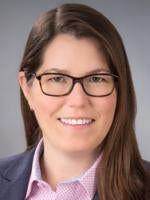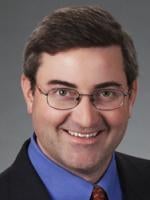Health care organizations working with marketers, independent sales representatives, advertising, and other consulting support to promote sales of products or services received welcomed news that their arrangements may be lower risk than some believe. On April 14, 2025, the United States Court of Appeals for the Seventh Circuit issued an opinion providing a crucial interpretation of the meaning of “referrals” under the federal Anti-Kickback Statute (AKS), found at 42 U.S.C. § 1320a-7b.
The case, United States v. Sorenson, addressed whether a Medicare-registered distributor violated the AKS in making payments to advertising, marketing, and manufacturing companies that worked to sell orthopedic braces to Medicare patients. The court held that such payments were not “referrals” within the meaning of the AKS because the payments were made to entities that were neither physicians in a position to refer their patients nor other decisionmakers in positions to “leverage fluid, informal power and influence” over health care decisions.
Background
The AKS is a criminal law that prohibits the knowing and willful offering, paying, or receiving any form of compensation or benefit — known as “remuneration” — in exchange for patient referrals or generating business related to services or items reimbursable by federal health care programs (e.g., Medicare or Medicaid-covered drugs, supplies, or health care services). Remuneration is broadly defined to include anything valuable beyond just cash payments, such as free rent, luxury hotel accommodations, expensive meals, or inflated payments for consulting roles and medical directorships. The statute targets arrangements involving individuals who can influence patient decisions or have access to patients, thus affecting patient health care choices. A common example would be a physician receiving money for referring patients to specific health care providers, like hospitals or specialists, but the statute can reach non-physicians, as well, although such cases seem to be less common among those prosecuted. The AKS is also used as a basis for the assertion of civil false claims that are tainted or caused by a violation of the AKS.
In Sorenson, SyMed Inc., a Medicare-registered distributor of durable medical equipment, entered into a complex series of arrangements with a durable medical equipment manufacturer, PakMed LLC, a marketing agency, Byte Success Marketing, and a medical billing agency, Dynamic Medical Management, to advertise orthopedic braces to patients, to obtain signed prescriptions from the patients’ doctors, to distribute the braces, and then to collect reimbursement from Medicare.
The business model involved multiple steps. Initially, Byte and another marketing company, KPN, ran advertisements for orthopedic braces. Patients interested in the braces responded by submitting electronic forms containing their names, addresses, and physician contact details. These details were then sent to call centers, where sales agents from Byte or KPN reached out to patients to discuss brace orders and prepare prescription forms. Once additional details were collected and patient consent was obtained, the sales agents faxed prefilled, unsigned prescription forms to the patients’ doctors. The prescription forms prepared by Byte included SyMed’s name and corporate logo, along with a list of devices to be ordered.
Critical to the court’s analysis, physicians who received these unsigned prescription forms had complete discretion to either sign and return them to SyMed and Dynamic for further processing or to ignore them entirely. Physicians rejected approximately 80% of the orders originating from KPN and frequently disregarded those from Byte. If a physician decided to sign and approve a prescription, SyMed instructed PakMed to deliver the braces directly to patients, while Dynamic submitted billing to Medicare on SyMed’s behalf. SyMed retained a 21% service fee from the Medicare or insurance payments, from which it compensated Dynamic for its billing services, and forwarded the remaining 79% to PakMed. PakMed then used part of its share to pay KPN and Byte, the marketing firms, based on how many patient leads each had generated.
Based on this business model, a federal grand jury indicted Sorensen on four counts. Count One charged Sorensen with conspiring to offer and pay remuneration, including kickbacks and bribes, for furnishing services for which payment may be made in whole or in part under a federal health care program in violation of the AKS. Counts Two, Three, and Four charged Sorensen with substantive violations of the AKS citing three specific payments. The district court characterized the question as a “close call,” but ultimately convicted Sorensen because the evidence regarding willfulness allowed the jury to find beyond a reasonable doubt that Sorensen “knew from the beginning of the agreement in 2015 that the percentage fee structure and purchase of the doctor’s [sic] orders violated the law.”
Analysis
On appeal, the Circuit Court considered whether the payment fell within the prohibitions of the AKS, which require that a payor act with the intent to induce referrals from the payee (recipient) to implicate the statute. As the court noted, in considering whether a payment falls within the prohibitions of the AKS, the focus is on an intent to induce referrals — as opposed to the titles or formal authorities — from the payee in order to “broaden liability to reach operatives who leverage fluid, informal power and influence” over health care decisions. Payments to non-physicians, however, present uncommon scenarios, as the power to guide patients to specific providers and approve care presents a significantly lower risk in comparison to such power held by a physician.
The Department of Justice (DOJ), which had commenced the prosecution, made the argument that the term “refer” is broad, “encapsulating both direct and indirect means of connecting a patient with a provider.” In DOJ’s perspective, the inquiry was to be focused on substance, not form, and thus a non-physician makes a referral within the meaning of the AKS when he or she “steer[s] a patient to a particular provider,” even if the referring person is neither a “‘relevant decisionmaker”’ nor “in a similar position as the relevant decisionmaker.” The court, however, rejected such a broad interpretation, noting that DOJ produced no evidence that Sorensen, PakMed, KPN, or Byte authorized medical care in such a way to implicate the AKS referral prohibition.
Moreover, the fact that SyMed shared revenue with PakMed on a percentage basis did not render the arrangement illegal. The court noted that “percentage-based compensation structures are not per se unlawful.” Instead, to violate the AKS, “payments have to be made in order to induce an unlawful referral,” which “requires proof beyond showing that a percentage-based compensation contract existed.”
Fundamentally, due to an advertiser’s lack of “any sort of informal power and influence over healthcare decisions,” here, the Court concluded that there was no referral under the AKS. There was a notable difference “between a payment to induce referrals from a payee who is in a position to make or influence healthcare decisions, which violates the statute, and a payment for advertising services, which does not.” Without authority to act on behalf of a physician, authorize medical care, or unduly influence physician decision making, a violation of the AKS did not exist. Under the arrangement in question, physicians always had ultimate control over their patients’ health care choices and applied independent judgment in exercising that control.
One interesting observation of the Court was that if the entities and the advertisers had all worked for the same company, their actions would never have been viewed as federal crimes. To align incentives, employers regularly structure compensation based on how much business employees generate. The AKS recognizes this common practice. Among its exclusions, for example, the statute contains a safe harbor provision, 42 U.S.C. § 1320a-7b(b)(3)(B), that exempts payments by “an employer to an employee (who has a bona fide employment relationship with such employer) for employment in the provision of covered items or services․” Though this comment was resigned to a footnote, perhaps the Court was signaling that the distinction between independent contractor and employer is not as critical as some commenters have worried in the past.
Conclusion
Both physicians and non-physicians can wield formal or informal influence over patients’ choices of health care providers, often leveraging personal relationships to limit competition and harm patients, and consequently increasing costs for federal health care programs. The AKS explicitly prohibits payments intended to induce improper influences, which is consistent with public policy. In this case, however, Sorensen’s payments to PakMed, KPN, and Byte were compensation for legitimate, routine services — such as advertising, manufacturing, and product delivery — and not in exchange for patient referrals.
Although refraining to comment on the broader social implications or desirability of aggressive, even intrusive, marketing strategies like Sorensen’s, the court noted that vigorous advertising alone was not equivalent to illegal patient referrals. Since no evidence was presented that would permit a reasonable jury to conclude beyond a reasonable doubt that Sorensen made payments or agreements in exchange for referrals as defined by the AKS, the district court’s judgment was reversed.
This decision does not mean that providers, manufacturers, or others engaged in the health care ecosystem need to change any current practices. But it does stand for an important milestone in the ongoing interpretation of the AKS, one of the key fraud and abuse enforcement tools, that will be closely monitored by entities defending against AKS or FCA actions premised on certain compensation arrangements that previously had been questioned. Under the Court’s ruling, heath care providers may structure compensation arrangements involving marketing and sales without implicating AKS, as non-physician recommendations may evade classification as an illegal referral. The Court’s ruling, emphasizing the payee’s inability to leverage influence or power over health care decisions, suggests that providers could, with the proper safeguards in place, utilize percentage-based compensation structures or per lead compensation arrangements with marketing and sales teams. Providers should consult legal counsel on structuring any such arrangement to ensure AKS compliance and meet any applicable safe harbor protections.






 />i
/>i
